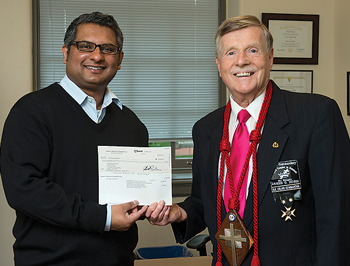Cataract culprits

OUR FACULTY | When cataracts encroach on the eyes, the only effective remedy is to surgically replace the eyes’ lenses with synthetic substitutes. But what if scientists found a way to delay or prevent cataracts from forming in the first place?
UD researchers may have found such an opportunity by identifying the prime suspects in the formation of cataracts—deficiency of two genes that encode regulatory proteins.
When those two genes are unable to do their work, the lenses of the eyes become cloudy and develop cataracts, no aging process or damaging exposure to radiation required.
The discoveries emerged in the laboratory of Salil Lachke, assistant professor of biological sciences and a Pew Scholar in biomedical sciences.
Lachke and then-graduate students Smriti Agrawal, AS14M, Archana Siddam, AS12M, and postdoctoral fellow Deepti Anand, AS15, studied lens development in mice to better understand the genetic mechanisms that lead to cataracts in humans.
Their findings could contribute to interventions that one day delay or prevent cataract formation, which now afflicts more than half of the U.S. population over 80 years old and costs Medicare an estimated $3 billion in treatment every year.




